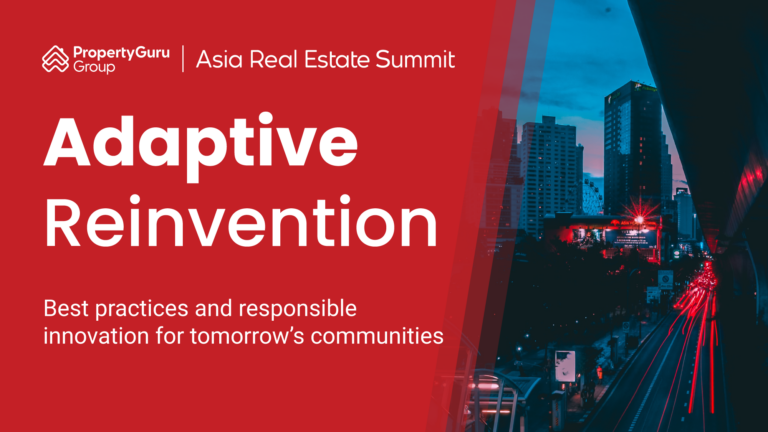Urgency of sustainability: Climate champions rouse real estate leaders to act responsibly
This article is based on the Chairperson’s Closing Remarks at the PropertyGuru Asia Real Estate Summit originally presented on 3 December 2020.
Our aim is to educate, innovate, and inspire everyone

The aim of the PropertyGuru Asia Real Estate Summit every year is to educate, innovate, and inspire. The breadth of knowledge and experience from our 2020 Summit speakers and panellists enabled our industry’s overall status, achievements, and challenges to be explored – and the conversations will continue in 2021.
Our real estate sector directly reflects the progress and realities across all four pillars of sustainability: environmental, human, social, and economic.
Making choices and taking actions
In the real estate sector, so much occurs rapidly and in real-time – from project initiation, design, construction, and beyond.
However, progress, in terms of sustainability, is extremely slow.
The choices our industry makes lead to outcomes that last for generations. The very significant impact of the real estate sector, in terms of the key indicators for energy and carbon emissions, are well established.
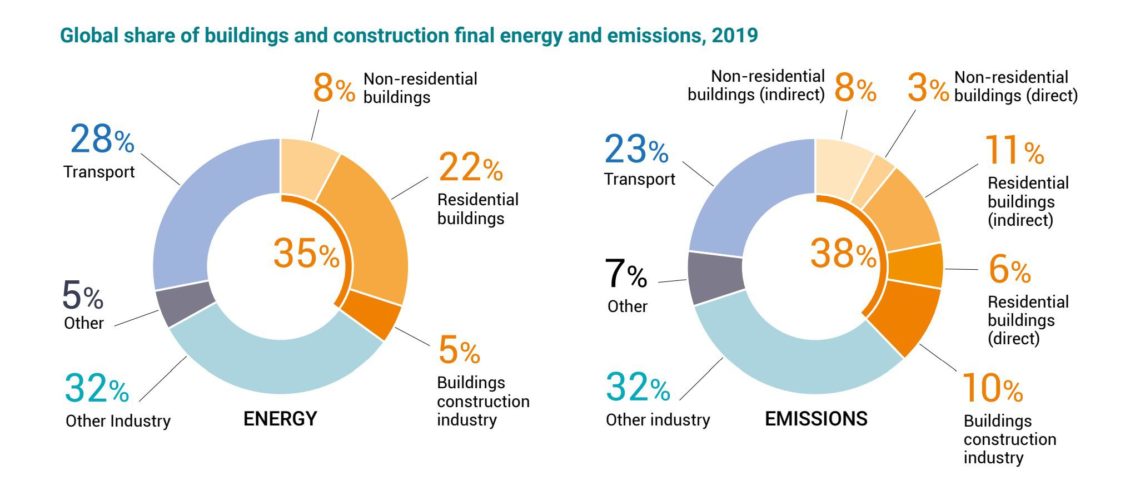
Global perspectives: Environmental pledges and actions
When we look at news headlines around the world, the intentions are clear – businesses, governments, and the general population have resolved to cut carbon emissions dramatically.
This acknowledgement, and the pledges to reach carbon neutrality by 2050, are ubiquitous. The reality is that zero emissions by 2050 is not the pathway we are on – not even close.
2050 is less than 30 years away and it is being realised that we are not on the needed trajectory. In recognition of this, various carbon pledges have been renewed for the year 2030.
Across the globe, firms undertaking to reduce carbon emissions by 2030 are occurring. For example, the European Union committed -55 percent (1990 baseline), the United Kingdom pledged -68 percent (1990 baseline), the United States vowed -50 percent (but against a 2005 baseline), and so on.
The intention is that global emissions are to be cut by 50 percent (or greater) by 2030, but will that be achieved? The answer is no. With less than 10 years left until to the end of 2030, we would need to be seeing very significant reductions year-on-year. Globally, this is not happening.
When we read all the international news, it does appear that a lot might have already occurred. However, over recent decades, all are aware that many countries have been outsourcing significant parts of what was their own domestic manufacturing sector.
Shifting CO2 emissions to another country is not necessarily progress and often, from a carbon perspective, it is regressive. The accounting for these factors is often obscure or sketchy. Further, what underlies a lot of the positive reporting about CO2 emission reductions is related to using less coal for electricity production and using more gas instead. This was, at best, the low hanging carbon fruit.
Even so, CO2 emissions globally continue to increase each and every decade.
Moreover, with the extraordinary disparities for CO2 emissions per capita globally, a 50 percent more reduction for many countries will still result in those countries emitting much greater CO2 emissions per capita than the world average.
It is inequitable for a single parameter, and metric of carbon emissions against a baseline of 1990 levels (or for any other reference year), to be applied globally. This simplistic type of outlook ignores the countries who are striving for essential economic growth and associated liveability progress.
Every country cannot be reasonably expected to achieve the same carbon emission reductions, however, all countries can and should focus on their real estate sector to achieve maximum sustainability across all four pillars: environment, human, social, and economic.
The real estate sector
As discussed at the outset of this paper, the rates of new real estate are unstoppable, and it reflects so much that is positive and that is equitably essential for billions of people.
Globally, our real estate sector has done little in terms of overall carbon reductions and is not in line with any of the targets for the years of 2030 or 2050.
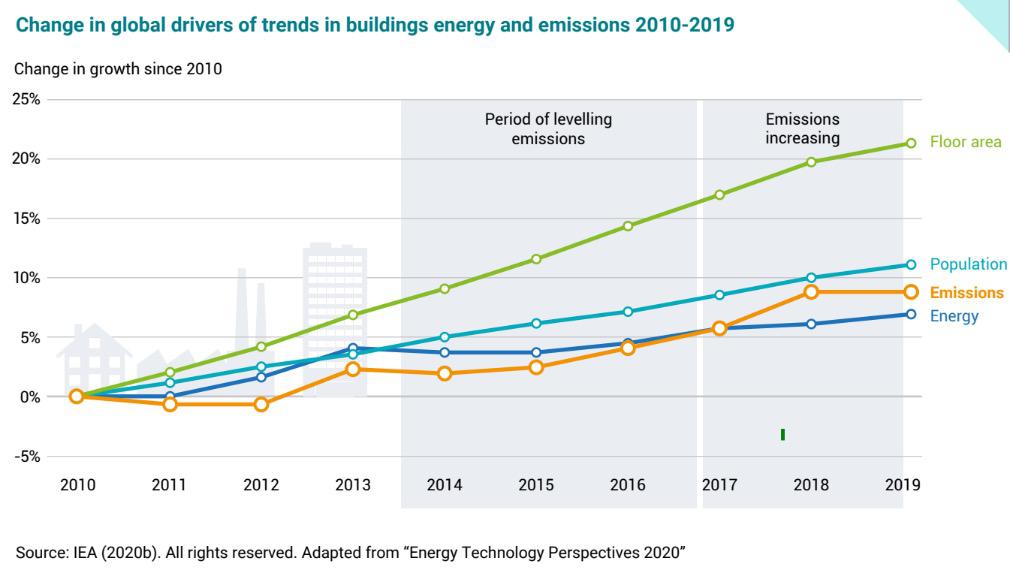
Can sustainability be considered a choice? Yes. Is it an imperative? Yes. What is stopping us? In reality, nothing.
However, there are perceptions we must address:
•Awareness. As reflected by the carbon reduction pledges being made internationally, the awareness, recognition, and acceptance for sustainability actions is now largely behind us.
•Intentions. Calls for ‘general’ action are all around us – slowly focused and equitable actions are being formed in the corridors of power and boardrooms globally.
•Support. The role of governments, the impetus from civil society, and the drive of businesses needs to be focused on breaking out of business-as-usual to achieve all the benefits of sustainability – this is a ‘current’ frontier. •Costs. The perceptions that pursuing sustainability – and going beyond business-as-usual processes – is to accept that additional costs is changing. The realisation is that enhanced value management methods can
achieve significant upfront CAPEX savings and further OPEX savings year-on-year and advance sustainability in very positive and measurable ways.
•Risks. Our real estate sector is plagued with oversights, cost, time overruns, etc. Rigorous and holistic
reviews can save ‘planned’ CAPEX and OPEX and, in addition, will reduce or eliminate risks resulting in overruns, unwarranted compromises, and un-planned financial costs.
•Value. The extraction of value is reflected in the above and is complimented by value creation.
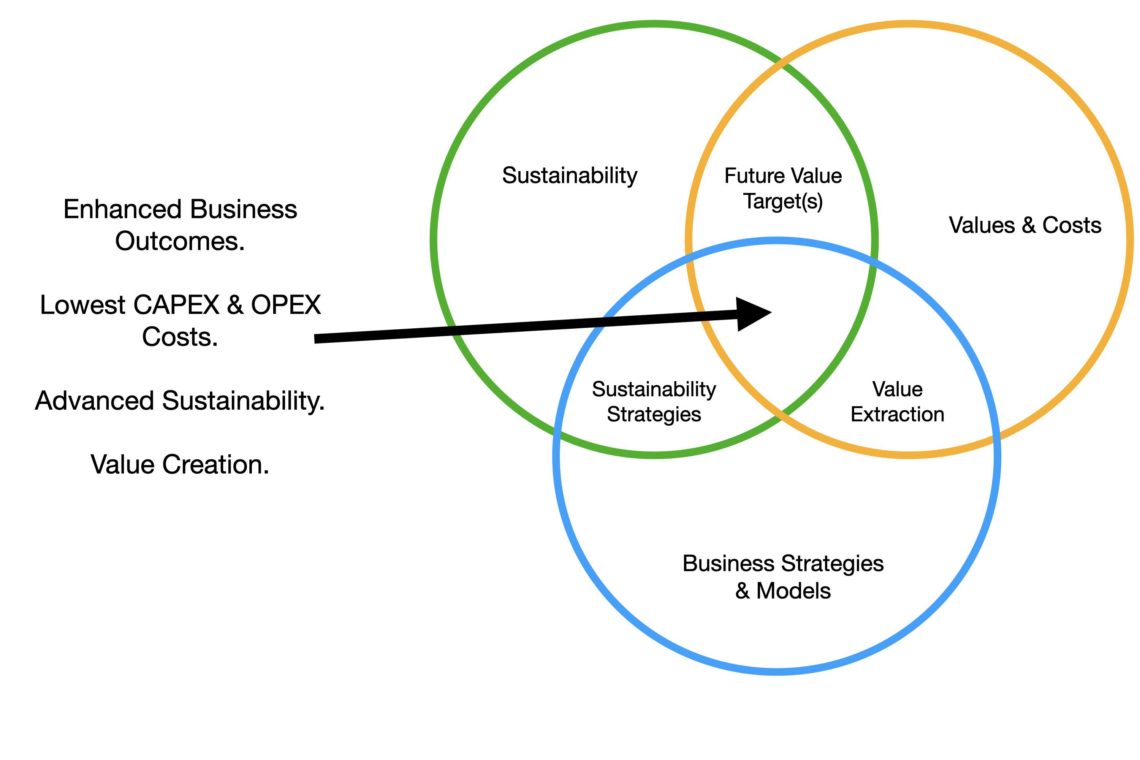
Making the ‘right choices’ requires improved processes and strategies. Business-as-usual approaches will, more or less, end up with business-as-usual outcomes no matter how much the aspiration, or imperative, is to achieve improved outcomes.
There are challenges, however, the rewards of holistic reviews and the pursuit of improved sustainability are substantial. Having personally been involved with value management and improved sustainability on projects all over the world, there has never been a project that did not reduce upfront capital costs and reduce ongoing operational costs, while achieving improved sustainability.
Making the right choices also means navigating through greenwash. Greenwashing is a minefield where statements or representations are made, but are not correct.
Over the years, greenwashing has soured the experiences of governments, authorities, and developers when pursuing sustainability. Unfortunately, greenwashing is widely practised.
Often, the perpetrators of greenwash really believe in what they are promoting because they believe in their models, teams, etc. Expert reviews and evaluations can eliminate greenwash, too. Greater transparency is also required and occurring.
For instance, mandatory (or even voluntary) energy consumption disclosures for buildings are now in place in many parts of the world. This is appropriate and needed. So many highly profiled buildings that claimed world leading energy efficiency were found later to have unexceptional energy performance.
Achieving sustainability requires a lot more than just aspiration. However, aspiration is where it starts. This is reflected in all the pledges that are being made by governments and businesses globally for carbon emission reductions.
The world’s sustainability aspirations are not only focused on carbon. More balanced views over the four pillars of sustainability are occurring. These reflect the recognition of different considerations and the inequities that exist globally.
For example, the 2015 United Nations Sustainable Development Goals (SDG’s). These are very broad and compelling.
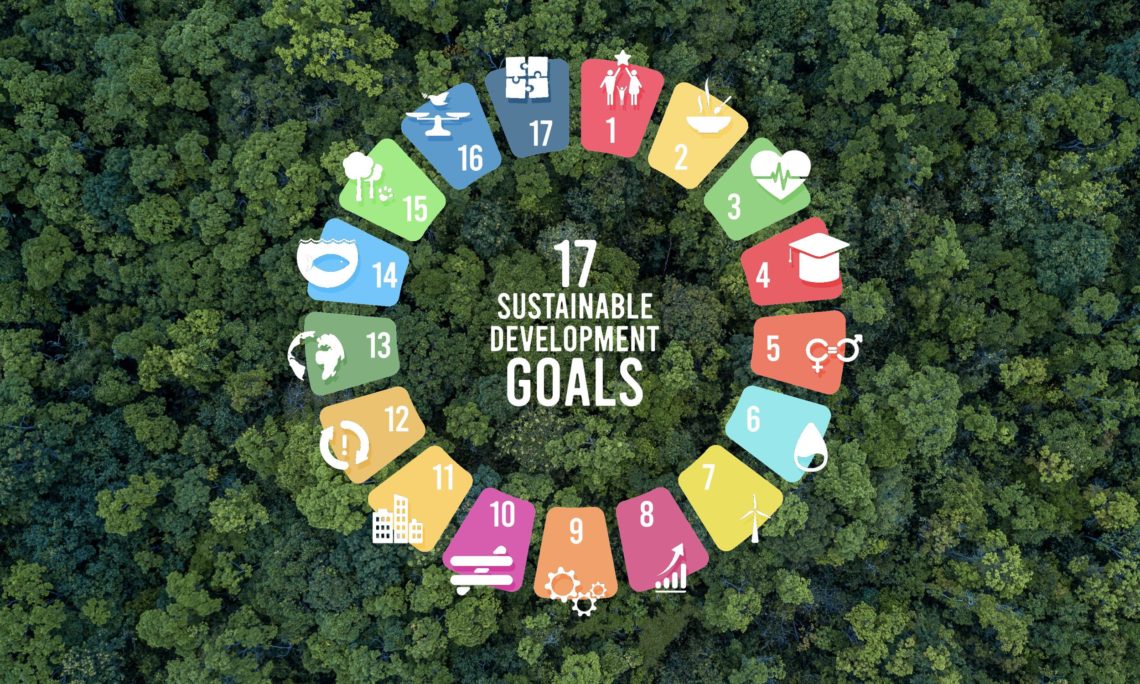
Furthermore, the national disparities in CO2 emissions per capita highlight that countries, with the economic capacity to achieve substantial sustainability progress, are not doing enough at home; nor are they equitably supporting the required sustainability outcomes globally.
Simple parameters for sustainability, for example, carbon emission reductions, do not unite us; they lead to division. Unless this is recognised and addressed, we will not achieve the international sustainability outcomes required.
The real estate sector must collectively convert our sector’s experiences and our capacity for progress to support global sustainability aspirations. The carbon emission pledges, the United Nation’s Sustainability Development Goals et al. will not be achieved without our sector achieving transformation.
What can we learn from Covid-19?
We needed to be prepared. The world was not. We had enough information, strategic concepts, contingency plans, so much experience from the past (Spanish Flu 1918-1920, etc), and recent history (SARS 2002-2004, MERS, etc).
Nevertheless, we are now living through the inevitable solutions, mutations, mutations, and waves of the COVID-19 pandemic. The disconnect between science, our preparations, actions, and ability to achieve collective outcomes are reflected in the hard cold facts that are intensifying in real-time, before our eyes.
There are illuminating parallels to the pandemic and our current global sustainability status. Long before COVID-19 emerged, epidemiologists et al. have been raising concerns about the readiness of countries, individually and collectively, for a future viral outbreak.
For over 30 years, the scientific community have been warning us all about carbon emissions, climate change, and so much else linked to the worlds lack of sustainability. The world has been listening; however, globally, the actions and the outcomes are falling well short of our collective expectations. This must change.
The prognostic truths of the current COVID-19 pandemic will arise, with even greater devastation, if we do not significantly improve our actions to achieve greater sustainability.
Taking actions, achieving outcomes
Focusing on the value outcomes and cost benefits for sustainability would transform our world across all four pillars of sustainability – our aspirations need to be translated into effective and efficient strategies.
Major shifts away from business-as-usual is needed. The sustainability tools that will help quantify and recognise our progression are already substantially developed. We need to utilise all the international knowledge and experiences to collectively achieve equitable sustainability outcomes.
Sustainability is challenging. It is certainly required. It is progressively attainable in all respects.
Will the pledges for 2030 and 2050 carbon emission reductions make their mark? Will our aspirations for
greater equity and sustainability be achieved? The answers are ‘yes’ if we step-up actions that achieve measurable outcomes – each and every year – starting immediately.
The question we asked for the summit in 2020 was, ”What are you doing?”
Thank you to the thousands of people around the world who responded and participated. We are looking forward to continuing our support of the Asia Pacific real estate sector and sustainability at the next PropertyGuru Asia Real Estate Summit in December 2021 and beyond.
The original version of this article appeared in Volume 1 of the PropertyGuru Asia Real Estate Summit (ARES) Digital White Paper. Write to our editors at [email protected].
Recommended
6 green real estate projects reshaping Asia’s future
Developers are being incentivised to push a green agenda into daring new realms
ARES White Paper Volume 3: The era of adaptive reinvention
Pioneering sustainable and innovative practices in urban development
ARES White Paper Volume 2: Unravelling the power of data revolution in real estate
Insights on proptech, smart cities, and sustainable development
ARES Digital White Paper Volume 1: The fundamentals of responsible building
Green and climate heroes join forces to discuss how Asia Pacific can weather the current environmental crises and the looming effects of climate change

